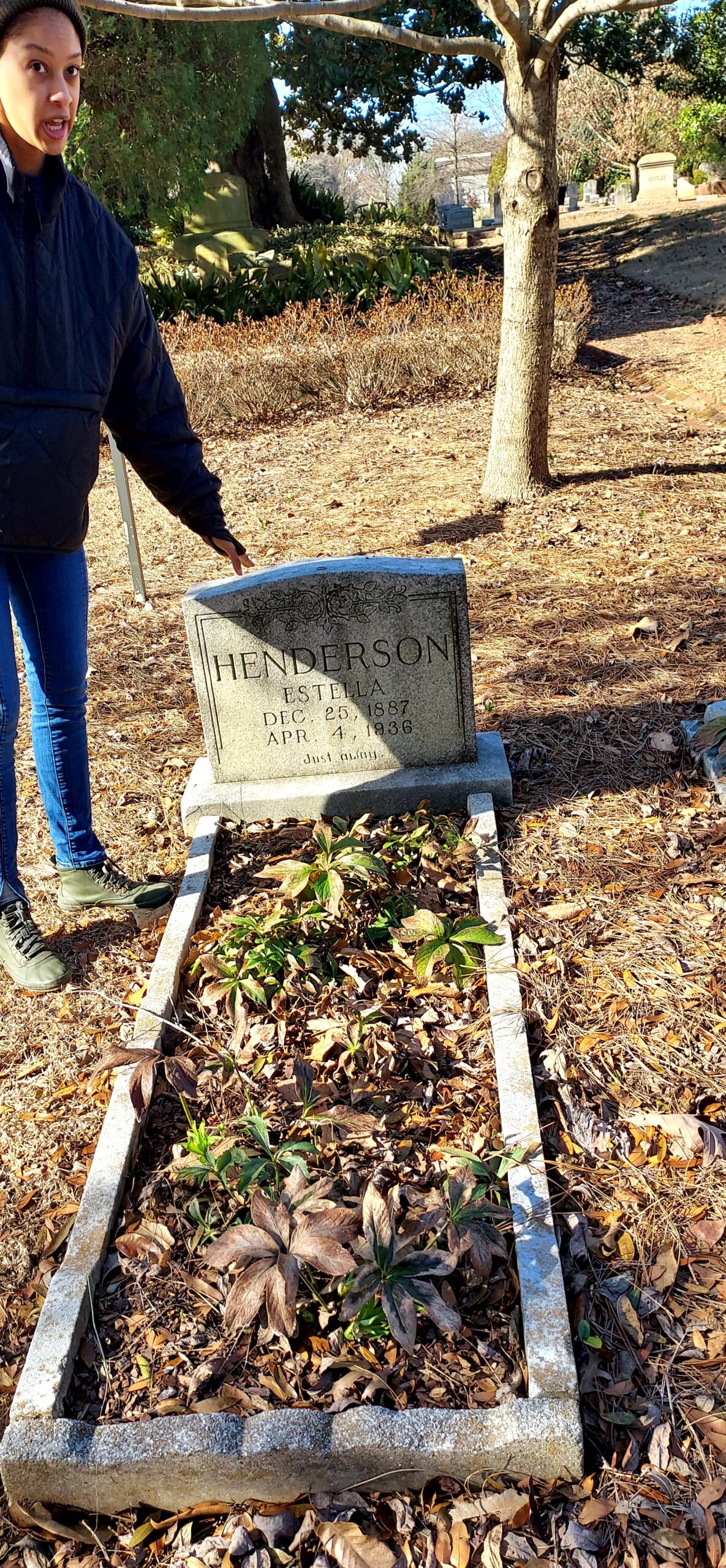First in a series

Jihan Hurse, guide, Atlanta, GA.’s Oakland Cemetery’s “Black Magnolias” tour
Atlanta, GA — On a chilly Saturday winter morning, Oakland Cemetery’s “Black Magnolias” Tour Guide and Author Jihan Hurse, excitedly gives highlights of the Black women who lie among its 70,000 “residents” in the city’s historic cemetery.
The hour allotted for the tour was not enough time for all of the stories about accomplished Black women who are buried in Oakland Cemetery. Yet, the Black Magnolias tour was a refreshing collection of insight into the lives of Black women who were quiet and major influencers in the Atlanta region, Georgia and nationwide. Along the multiple paths laden mostly with bricks from days gone by, there were periodic stops at the chosen grave sites of many women who were doctors, lawyers, entrepreneurs, mothers, wives, educators and skilled technicians.
The Black Magnolias story at Oakland Center is grounded in the fortitude of laundry or washerwomen whose citywide protest resulted in violence, arrests, intimidation and ultimately, a major victory for the Black women who refused to return to work unless their financial and work life demands were met. Their well-organized strike involved some 3,000 Black laundresses and it nearly imperiled the 1881 World’s Fair in Atlanta.

Former slaves strike for better pay and work conditions in 1881.
While praising the domestic workers’ brave and labor market altering stance, Hurse strategically showcased other Black women whose legacies are integral to the success of the Atlanta area, Georgia and the nation. Despite the achievements that stretch beyond racial and geographical boundaries, most of the 12,000 African Americans — including approximately 1,800 slaves — are buried at Oakland in segregated sections known as the African American, Slave and Potters sections.
There are also exceptions to the burial rules of segregating whites, Blacks and Jewish deceased persons from one another. When whites sought permissions to move the burial area initially designated for Black slaves, the graves were moved to the back of the cemetery. Some natural markers such as stones and sticks were not preserved. When that relocation was completed, some families such as the Boylstons asked for an additional set of permissions and that was to bury their “domestic worker,” Catherine Holmes, alongside their family members, according to Hurse. Elise Boylston had a special fondness for “Caty” and the young Boylston lady authored work that included her slave. By the 1960s, Blacks were not segregated to one area or two areas of the cemetery

The grave marker for “Caty” Holmes, a “domestic worker” in the Boylston household, is left. This is a partial view of the extensive Boylston plot in the former Slave section of Oakland Cemetery.
A dozen other Black Magnolias were pointed out by Hurse as significant based on a range of qualities such as the first Black lady buried in Oakland Cemetery, to the sisters who established the first hospital with 15 beds that was available to Black patients.
Below is the grave site of Estella Henderson was an attorney, an author of books on race relations and was recognized by U.S. President William Howard Taft. Her sister, Dr. Blanche Beatrice Bowman Thompson, was a doctor whose practice pioneered specialty work for Black medical professionals in Georgia.

Future blogs will highlight the historical women of Oakland Cemetery. For those interested in the many stories of the Black men and women buried in Oakland Cemetery, the virtual tour is found through this service:


Good Genes Genealogy Services encourages readers of this blog to investigate similar historical stories in cemeteries that bear great stories such as those found at the Oakland Cemetery in Atlanta.

The 48-acre cemetery that is also considered a city park. The Oakland Cemetery Foundation conducts several tours each year, including a handful devoted to honoring Black history and women’s history.

